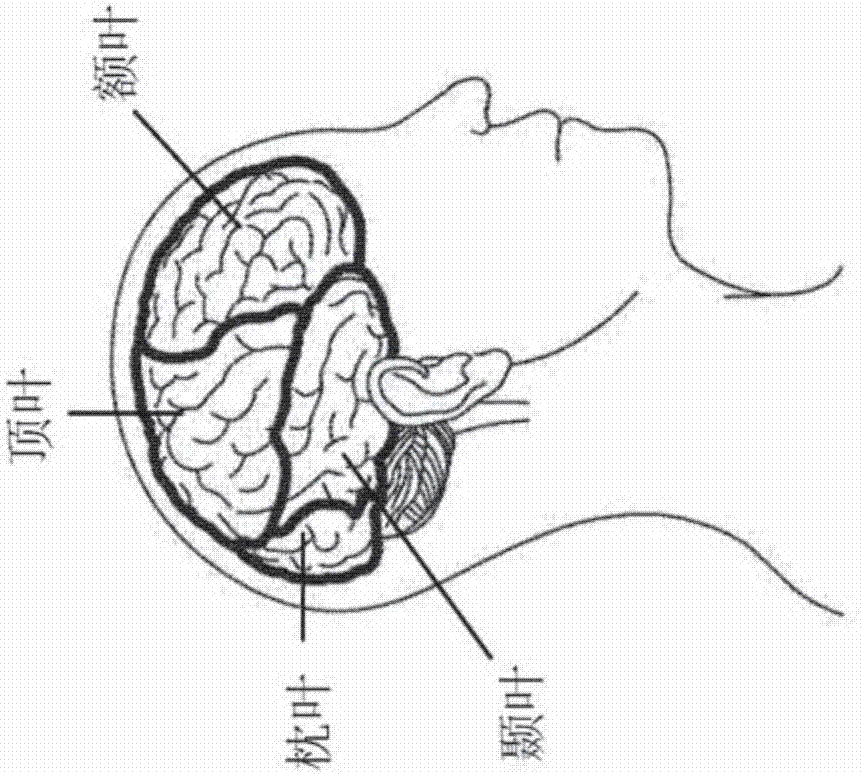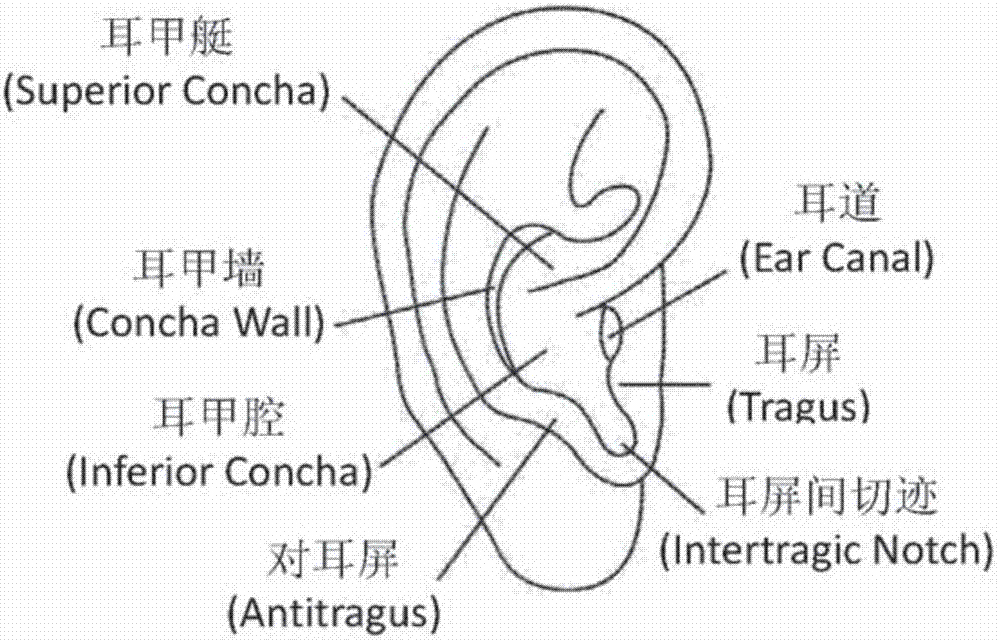Wearable physiological activity sensor, sensing device and sensing system
A technology of physiological activities and sensing devices, applied in sensors, psychological devices, hypnotic devices, etc., can solve the problems of inability to maintain stability for a long time, unstable contact between electrodes and skin, and reduced signal quality
- Summary
- Abstract
- Description
- Claims
- Application Information
AI Technical Summary
Problems solved by technology
Method used
Image
Examples
Embodiment Construction
[0066] First, see figure 1 , which is a schematic diagram of the position of the cerebral cortex in the skull and the position of the auricle. It can be seen from the figure that the cerebral cortex falls on the upper half of the skull, and the auricle (also called pinna) is located on both sides of the skull. And protruding outside the skull, which, roughly speaking, is separated by the ear canal, and the cerebral cortex falls roughly on the inner side of the upper ear canal.
[0067] The experimental results show that a good EEG signal can be measured at the upper part of the auricle, and the EEG signal becomes weaker as it goes down. After observing the physiological structure of the head, it should be because the upper auricle corresponds to the cranium The inside is the position of the cerebral cortex, so in this case, through the transmission of the skull and ear cartilage, brain waves can be measured at the upper part of the auricle, while the lower part of the auricle ...
PUM
 Login to View More
Login to View More Abstract
Description
Claims
Application Information
 Login to View More
Login to View More - R&D
- Intellectual Property
- Life Sciences
- Materials
- Tech Scout
- Unparalleled Data Quality
- Higher Quality Content
- 60% Fewer Hallucinations
Browse by: Latest US Patents, China's latest patents, Technical Efficacy Thesaurus, Application Domain, Technology Topic, Popular Technical Reports.
© 2025 PatSnap. All rights reserved.Legal|Privacy policy|Modern Slavery Act Transparency Statement|Sitemap|About US| Contact US: help@patsnap.com



